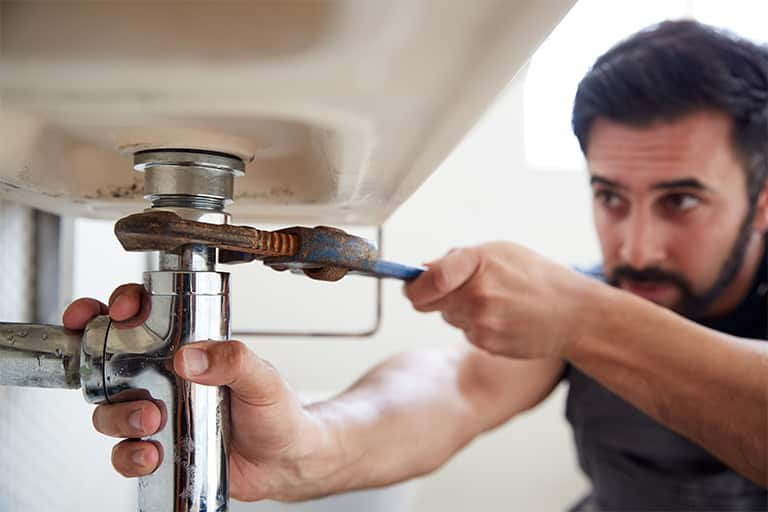Everyone seems to have their own individual way of thinking when it comes to Detecting hidden plumbing leaks.

Early discovery of leaking water lines can minimize a possible calamity. Some little water leakages might not be visible.
1. Take A Look At the Water Meter
Every house has a water meter. Checking it is a guaranteed manner in which assists you discover leaks. For beginners, switch off all the water sources. Make certain no person will certainly purge, make use of the tap, shower, run the washing maker or dish washer. From there, most likely to the meter and also watch if it will change. Considering that no one is utilizing it, there ought to be no motions. If it moves, that shows a fast-moving leak. Furthermore, if you spot no changes, wait an hour or more and also inspect back once more. This indicates you might have a slow leakage that could even be below ground.
2. Check Water Usage
If you find sudden modifications, in spite of your consumption being the very same, it means that you have leakages in your plumbing system. An abrupt spike in your expense indicates a fast-moving leakage.
On the other hand, a stable increase monthly, even with the exact same routines, shows you have a slow-moving leakage that's likewise slowly escalating. Call a plumber to extensively examine your building, particularly if you feel a cozy area on your floor with piping underneath.
3. Do a Food Coloring Examination
30% comes from commodes when it comes to water usage. Examination to see if they are running properly. Decline flecks of food shade in the container and wait 10 minutes. If the shade in some way infiltrates your bowl during that time without flushing, there's a leak in between the container and also dish.
4. Asses Exterior Lines
Don't neglect to check your outside water lines too. Needs to water leak out of the link, you have a loosened rubber gasket. One little leak can lose lots of water and increase your water expense.
5. Evaluate as well as Examine the Situation
Property owners must make it a habit to check under the sink counters and also also inside cupboards for any bad odor or mold development. These two red flags indicate a leak so timely attention is called for. Doing regular assessments, also bi-annually, can conserve you from a major problem.
If you know your house is already old, maintain a watchful eye on your heaters, hoses, pipes and so on. Check for discolorations and deteriorating as many pipelines and also appliances have a life span. They will certainly additionally normally degrade because of tear and wear. If you think leaking water lines in your plumbing system, don't wait on it to rise. Call an expert plumber right now so you do not end up with a dreadful mess in your house.
Early detection of dripping water lines can alleviate a potential catastrophe. Some tiny water leakages might not be visible. Inspecting it is a guaranteed means that aids you discover leakages. One little leak can throw away bunches of water as well as increase your water bill.
If you presume leaking water lines in your plumbing system, don't wait for it to rise.
How to Know If Your Home Has a Hidden Leak
Water Meter Reveals Inexplicable Water Usage
If you’d like to test whether or not there’s a leak somewhere in your home, you can do this using your water meter. Here is how to conduct the test:
Don’t use any water in your home for at least 30 minutes; this also means not turning on faucets or water-using appliances.
Go outside, and check your water meter for activity.
If your water meter shows that there was activity, even though no one was using any water, this proves that there is a leak in your home.Visible Mold or Mildew Growth
Leaks behind walls create moist, dark environments that allow mold and mildew to grow and thrive. Eventually, you might see mold growth forming on the wall closest to a hidden leak.
If mold is growing in an area that receives a high amount of moisture, such as a bathroom, it may simply be an indication that better ventilation is needed. However, if you see mold growth on a wall or the ceiling in an area where you would not expect, you probably have a hidden leak.
Musty, Mildew Odor
Sometimes you might not be able to see the mold or mildew that is growing as a result of a leak. However, the smell can give the problem away just as easily. If you catch a whiff of something musty, there’s a good chance that old water is collecting somewhere in your home that you can’t see.
Stained/Warped Walls, Ceilings, or Floors
When your home soaks up water, a variety of red flags can become visible, including ceiling stains, bubbling drywall, warped walls, and sagging floors. While these issues can be caused by excess humidity, they can also be signs that a pipe or plumbing connection has started leaking behind your walls.
Inexplicably High Water Bill
After a while, you get a general sense for what your water bill should be. If you own a pool or sprinkler system, your bill will tend to be higher during summer. However, if you receive a water bill that seems especially high, and you can’t figure out what caused it, then you may have a hidden leak somewhere that’s increasing your bill.
https://www.plumbingjoint.com/blog/2019/july/how-to-know-if-your-home-has-a-hidden-leak/

I recently found that article about Finding hidden leaks when perusing the web. Sharing is good. Helping others is fun. Thank you for going through it.